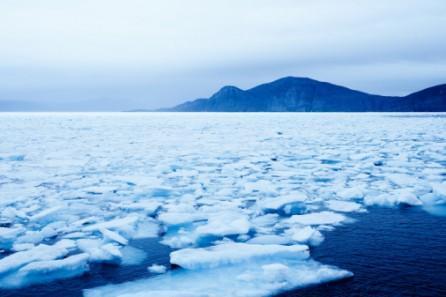 Traditionally, March has been a month where explorers and adventurers have set off across the frozen Arctic Ocean in an attempt to reach the North Pole. In recent years however, those expeditions have proven nearly impossible, with the ice disappearing at an alarming pace. Now, we have an idea of just how the Arctic is changing, thanks to a new report from the National Snow & Ice Data Center.
Traditionally, March has been a month where explorers and adventurers have set off across the frozen Arctic Ocean in an attempt to reach the North Pole. In recent years however, those expeditions have proven nearly impossible, with the ice disappearing at an alarming pace. Now, we have an idea of just how the Arctic is changing, thanks to a new report from the National Snow & Ice Data Center.According to recent data collected via satellite, the Arctic saw very little ice growth during the month of February, which is a time when it is typically growing due to the cold conditions. In fact, for three weeks of the month, there was no growth at all, and it wasn't until the last week that any growth was observed. This comes after similar observations in January, when the ice failed to show much growth either.
As a result of these conditions, the ice in the Arctic covered an average of 14.22 million square kilometers (5.48 million square miles) for February, which is the lowest it has been since satellites have been used to collect data. That's also 1.16 million square kilometers (448,000 square miles) below the observed average, with data collection beginning back in 1981. It is also is 200,000 square kilometers (77,000 square miles) below the previous record low for February, which was recorded in 2005.
To put this in perspective, the amount of ice that is currently missing from the Arctic is enough to cover Texas, Arizona, and Utah. That's a seriously large patch of open water that is typically frozen this time of year.
March is usually the month when the Arctic ice reaches its peak. From there, the conditions begin to warm throughout the spring and summer, as the ice retreats throughout those seasons. What will happen this year remains to be seen, but it seems like we're poised to have the smallest pack ice in the Arctic Sea in recorded history.
The long term effects of this could be dramatic of course. Not only are we seeing temperatures on the rise throughout the year, but the melting ice will start to have an impact on sea levels too. That will of course change the coastlines around the world in the years to come. That's still some time off, but the process is starting to happen now, and we may still be able to have an impact on it.
Bottom line: climate change is real. It is happening, and it doesn't matter why it is happening, just that we should do what we can to slow or reverse it. It's not too late, but we have to get serious fast.

